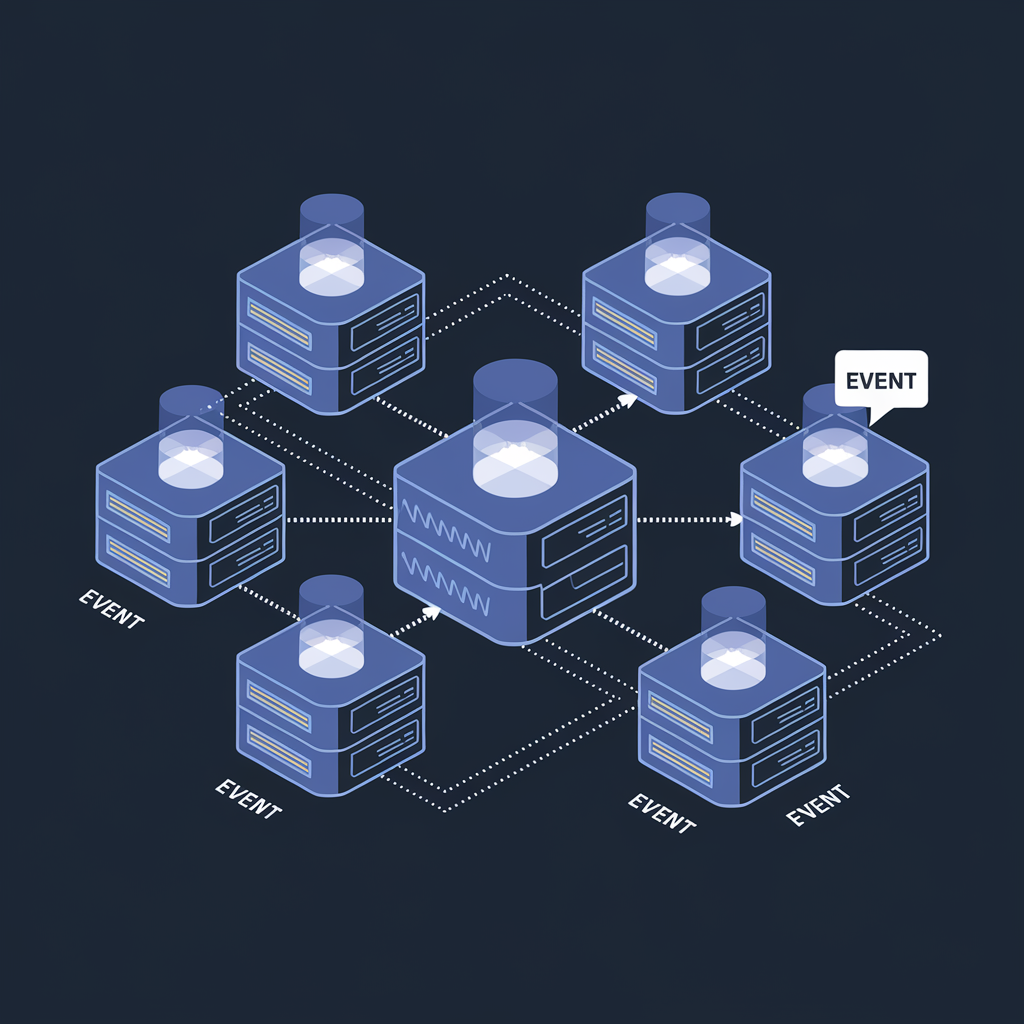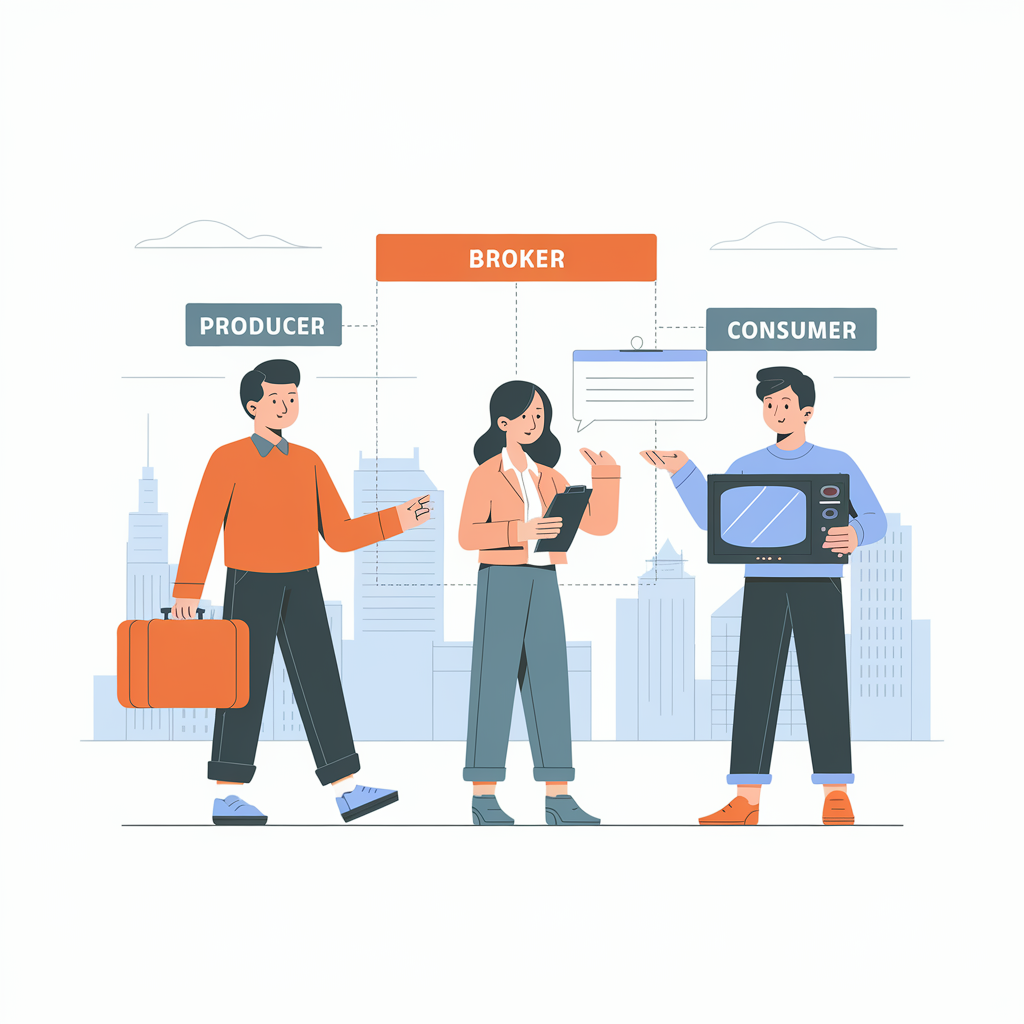Event Driven Architecture (EDA)

Event-Driven Architecture (EDA) is a powerful software design paradigm that relies on events to trigger actions within a system. It is increasingly popular for building scalable, loosely-coupled, and responsive systems that handle complex, real-time data flows. In this article, we'll explore the principles of EDA, its key components, and how it differs from traditional request-driven models.
EDA enhances flexibility by allowing systems to react in real-time without waiting for synchronous requests. This architecture is widely used in microservices, IoT, and serverless applications, making it ideal for environments that require high availability and scalability.
Event-driven architecture revolves around the production, detection, and consumption of events. These events represent state changes or actions that occur within an application or between systems. The core of EDA consists of:
- Event Producers: Components that generate events when a state change occurs.
- Event Consumers: Components that respond to events and perform specific actions.
- Event Brokers: Middleware that routes events between producers and consumers, enabling decoupled communication.

Event-Driven Architecture: Deep Dive into Key Components
Event-driven architecture (EDA) fundamentally revolves around the concept of "events," which are signals that indicate that something has occurred—a state change or an action within a system. These events can originate from internal components or external systems, and they are the driving force behind the communication and functionality in an EDA system. Let’s explore the three key components that form the backbone of event-driven systems: Event Producers, Event Consumers, and Event Brokers.
1. Event Producers
Event producers are the components responsible for generating events whenever a significant state change or action occurs. These events can range from user interactions (like clicking a button) to system-generated actions (like a file being updated). Event producers emit messages that notify the rest of the system about the event, without needing to know which components or services will handle them.
Example
In an e-commerce application, an event producer might be the checkout service that generates an event when a customer places an order. This "Order Placed" event would then be broadcast to the rest of the system.
Key Features
- Decoupled: Event producers are not aware of who is consuming their events, making the system highly flexible.
- Asynchronous: Events are emitted and then processed later by other parts of the system, enhancing system performance.
- Scalable: Multiple event producers can operate independently, emitting events as they happen without causing bottlenecks.
2. Event Consumers
Event consumers are components that listen for and respond to events produced within the system. When they detect an event of interest, they perform specific actions based on the data contained in the event. Consumers are typically designed to handle certain event types and execute relevant business logic.
Example
Continuing with the e-commerce analogy, the inventory service could act as an event consumer. When it receives the "Order Placed" event, it might update the product stock, reducing the number of available items.
Key Features
- Event-Driven Logic: Consumers wait for specific events to trigger their operations, eliminating the need for polling or direct communication.
- Flexible Processing: Multiple consumers can subscribe to the same event and perform different actions independently, promoting parallel processing.
- Loose Coupling: Consumers don’t need to be tightly integrated with producers, allowing independent evolution and updates of system components.
3. Event Brokers
Event brokers serve as middleware that facilitates communication between event producers and event consumers. They act as intermediaries, routing events from producers to the appropriate consumers. Event brokers ensure that producers and consumers remain loosely coupled, meaning that producers can generate events without being concerned with who consumes them, and consumers can listen for events without knowing where they originate.
Example
In the e-commerce system, an event broker like Apache Kafka or RabbitMQ would route the "Order Placed" event from the checkout service (producer) to multiple consumers, such as the inventory management service, shipping service, and notification service.
Key Features
- Decoupling: Brokers abstract the communication layer, making it easier to add or modify consumers without disrupting the producers.
- Scalability: Event brokers allow events to be processed asynchronously by multiple consumers, enabling horizontal scaling as the number of events or system components increases.
- Reliability: Many event brokers support message persistence, ensuring that events are not lost even if consumers are temporarily unavailable.
How These Components Work Together?
In an EDA system, these components interact to create a fluid, scalable architecture. An event producer emits an event, which is then intercepted by the event broker. The broker forwards the event to the appropriate consumers based on predefined rules or subscriptions. Each consumer processes the event independently, often leading to multiple asynchronous actions that enhance the system's responsiveness and resilience.
Example Workflow
- A customer places an order (event producer emits "Order Placed").
- The event broker routes the event to several consumers (e.g., inventory, shipping, and notification services).
- Each consumer processes the event independently:
- The inventory service updates stock levels.
- The shipping service begins preparing the order for dispatch.
- The notification service sends an order confirmation email.
This model allows for a highly scalable and modular approach, where each service focuses on its specific task without needing direct communication with others. The use of events as the primary communication method decouples the components and allows for asynchronous, distributed processing, which offers several advantages for modern applications.
Advantages of Event-Driven Architecture
-
Scalability: EDA enables systems to scale horizontally. Multiple event producers and consumers can run in parallel, distributing workloads efficiently. For instance, if a high volume of orders comes in, the system can handle multiple events simultaneously by adding more consumers that listen to those specific events, ensuring the system doesn't become overwhelmed.
-
Real-Time Responsiveness: EDA supports real-time data processing. As events occur, they are immediately routed and handled by consumers. This makes EDA ideal for systems that require near-instantaneous reactions, such as financial trading platforms, IoT systems, or online gaming environments, where milliseconds matter.
-
Loose Coupling: Producers and consumers in an EDA system don't need to know about each other. They communicate only through events. This loose coupling allows developers to make changes to one part of the system without affecting others. For example, adding a new consumer that logs all orders for analytical purposes would not require any changes to the order processing system itself.
-
Fault Tolerance: In the event of a failure, the decoupled nature of EDA helps systems remain resilient. If an event consumer fails, the event broker can retain the event until the consumer is available again. Similarly, producers don’t need to wait for consumers to finish processing the events, making the system more fault-tolerant.
-
Enhanced Modularity: Each component in an EDA system is focused on handling specific events or processes. This modular approach enables teams to develop, test, and deploy individual components independently. It's particularly useful in microservices architectures where small, focused services can be developed and scaled independently.
-
Improved System Flexibility: Since EDA separates concerns between producers, brokers, and consumers, adding new features or services becomes easier. For instance, if a company decides to implement a recommendation system for customers based on their recent purchases, a new consumer could be created to listen for the "Order Placed" event, analyze the order data, and generate personalized recommendations—all without changing the existing system.
Challenges in Event-Driven Architecture
While EDA offers numerous advantages, it also comes with some challenges:
-
Event Ordering and Consistency: ensuring that events are processed in the correct order can be difficult. Since events are processed asynchronously and potentially by multiple consumers, ensuring data consistency across services (like stock levels in an inventory) can become complex. See Eventual Consistency.
-
Debugging and Monitoring: Tracking the flow of events in an event-driven system can be harder compared to traditional request-response architectures. Tools are required to monitor, log, and trace events as they move through the system, especially when dealing with large-scale systems where events may trigger multiple downstream processes.
-
Error Handling: In EDA, errors in processing events may not be immediately visible to producers, as the processing is asynchronous. Designing effective retry mechanisms and error handling strategies (e.g., dead-letter queues for events that fail to process) becomes crucial to avoid data loss or system downtime.
-
Complexity in Event Schemas: As the system grows, managing the schemas of events (i.e., the structure of the data they carry) can become complicated. Changes to an event’s schema must be handled carefully to maintain backward compatibility with existing consumers.
Conclusion
Event-Driven Architecture (EDA) provides a robust, scalable, and flexible way to design modern applications that can handle real-time data processing and asynchronous workflows. By breaking down the system into event producers, event brokers, and event consumers, EDA facilitates loose coupling and modularity, making systems more adaptable and resilient. Though it introduces some complexities, especially around event ordering, monitoring, and error handling, the benefits in scalability, flexibility, and real-time responsiveness make EDA an essential architectural pattern for cloud-based applications, microservices, IoT, and other high-traffic environments.
Having said that I think that's all and I conclude by saying that in the end "as long as it works" and this is just my humble opinion based on my experiences.
Goodbye
Daniele.